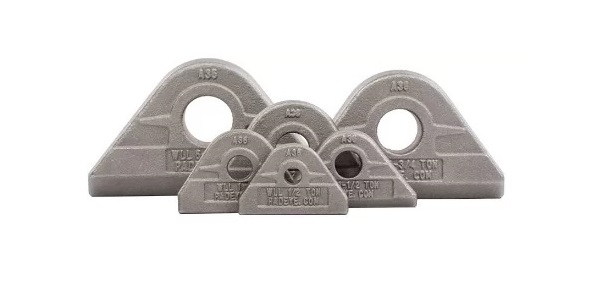Permanent rigging points like lifting lugs play a critical role in load handling. When installed correctly, they provide a secure attachment for hoists, slings, and rigging gear during lifting operations. But because weld-on lugs become a fixed part of your equipment or structure, any installation error can lead to instability, structural damage, or safety risks.
Field teams need to ensure these components are chosen, prepared, and installed with precision. This blog discusses what to consider when selecting weld-on lifting lugs.
Choosing the Right Style and Material
Weld-on lifting lugs come in a range of designs to fit different load types and attachment needs. Standard plate lugs are cost-effective and straightforward for flat surfaces, while eye lugs and swivel lugs provide more flexibility in load orientation.
Material selection is equally important. Carbon steel lugs are standard for general industrial use, while alloy steel options handle higher loads and harsh environments. Stainless steel lugs are used where corrosion resistance is critical, such as in marine or chemical facilities. Always match lug material to the equipment’s load rating, working conditions, and service life requirements.
Welding Requirements and Surface Prep
A weldable lifting lug is only as strong as the weld securing it. Before installation, remove paint, rust, grease, or any contamination from the base material. The welding surface must be clean and smooth for maximum fusion.
Use a qualified welder familiar with the lug’s material type and welding specifications. Follow the manufacturer’s guidelines for preheat, interpass temperature, and weld size. In many cases, welds need to be continuous rather than intermittent to maintain the full Working Load Limit (WLL). For critical lifts, consider non-destructive weld testing to verify quality before putting the lug into service.
Load Orientation and WLL Considerations
The placement and orientation of the lug determine how forces are distributed. A lug aligned for straight-line pulls will have different performance characteristics than one positioned for angular loading. Incorrect orientation can introduce bending stresses or torsion that exceed the lug’s rated capacity.
Always reference the WLL for the specific lug model and confirm that the load path will not impose side-loading unless the lug is designed for it. Overloading or using the lug in a way not specified by the manufacturer can lead to failure during lifts.
Inspection Guidelines
Once installed, lifting lugs require routine inspection as part of your rigging hardware program. Check weld integrity for cracks, porosity, or signs of fatigue. Look for deformation or elongation of the lug hole, which could indicate overloading.
If the lug is used in corrosive or outdoor environments, watch for rust or pitting around the weld area. Any structural change in the lug or its welds means it should be removed from service until repaired or replaced.
Common Failure Points
Failures in weld-on lifting lugs often stem from:
- Undersized or incomplete welds
- Poor surface preparation before welding
- Incorrect load direction or side-loading
- Using a lug with an insufficient WLL for the lift
- Corrosion weakening the weld or base metal
Addressing these risks before and after installation ensures the lug remains a safe, long-term rigging point.
Permanent Rigging Points That Last
Installing weld on lifting lugs isn’t just about attaching a piece of hardware—it’s about creating a reliable, permanent anchor point for critical lifts. By selecting the right style and material, preparing the surface correctly, following proper welding procedures, and inspecting regularly, you ensure these components perform safely for years. With quality products from Murphy Industrial Products Inc., you can build dependable lifting points that meet both operational demands and compliance standards.

